
17 minute read
Marianne Heron
Energy retrofitting grand if you can afford it
AS I SEE IT
Advertisement
MARIANNE HERON
Look before you leap should be the watchword before getting caught up in the toils of carbon reduction on the home front. With our homes accounting for a quarter of carbon emissions from energy consumption and continuing to rise, we all want to do what we can to help reach the target of zero emissions by 2050.
But the options open to householders are very costly, complicated and take a long time before the nancial cost can be justi ed in terms of savings.
Take solar panels: great for people working nightshift, they use the sun’s energy to replace expensive electricity, utilising daylight (not sunshine) and provide most energy at the time when you need it least, during daylight hours and in the summer time, rather than in the evenings and in winter. e cost of is relatively modest compared to other ways of reducing emissions, starting from €6,000 but that isn’t the end of it.
If you want to want to save any extra energy generated — say you are using the panels to heat your water and don’t use up all the power — you will have to install a battery to store it and if you want the electricity to go to the national grid you won’t be paid for this yet; you will be supplying it with no recompense for your investment. Also, it will take years before the savings you make on electricity actually pay for the cost of installation, not such a viable option for older people, albeit carbon reduction is an investment for future generations. en you may have to apply for planning permission for the panels, have your energy usage surveyed and appliances running o the panels will need special plugs. If you want to use the power for a home charger for your electric car, that costs over a grand and before you know it you will have spent a ve gure sum.
Heat pumps sounded appealing when I rst heard about them, anything to avoid the soaring cost of electricity bills. But the pumps, using air, water or groundbased heat exchange run on electricity don’t they? And 40& of our electricity sis generated still with gas and oil where prices are rising thanks to the actions of Putin.
Before you even consider a installing a pump you have to e cient insulation which doesn’t come cheap and you may need to have your home surveyed for heat loss using an infrared system. You can’t necessarily use a heat pump ( the most e cient of the three types is of course the most expensive) to run your existing radiators because under oor heating is being mooted. e temperature from a heat pump will be lower than traditional heating systems and needs to be operated in sealed spaces. How healthy is that I wonder? Before you know it the cost of retro tting ( sounds like a nostalgic fashion fad doesn’t it ?) could be heading for six gures. ere will be Government grants (covering between a quarter and half of the spend) and there will be a system of registered installers for solar panels and retro tting. at is supposing there are enough operatives available to do the work, a bit unlikely given there is already a shortage of builders dealing with the housing crisis.
All of which may be grand if you can a ord it and most of us can’t at least certainly not the retro t. It’s depressing feeling under pressure to do something you can’t manage especially given the latest dire warnings about climate crisis? ere seems to be remarkably little debate about alternatives and less costly ways of reducing emissions.
We need to start asking those questions.
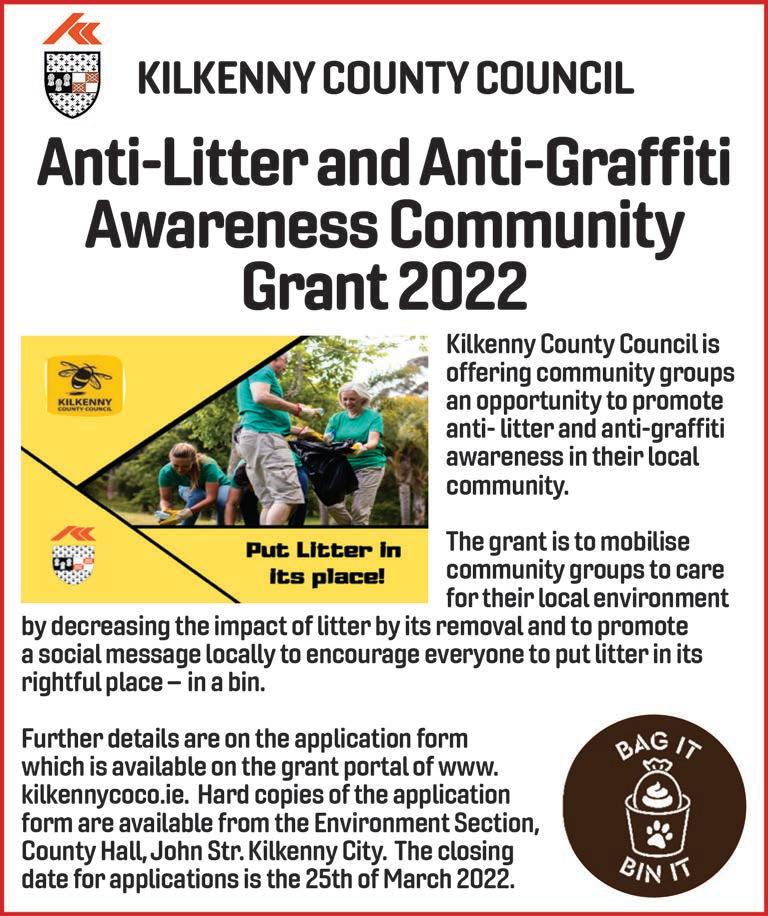
Juices for good health
CLAIR WHITTY
ORGANIC freshly pressed juices are a fantastic way to support your diet and improve your health. Making the juices yourself is the ideal way to go. But, if like me, you don’t have a juicer or you know that you just won’t do it, then freshly pressed organic juices like Biona are a great alternative.
Here are some reasons why you might like to try some juices.
Heart Health: Grapes, red grape juice, and even red wine have antioxidants or polyphenols. ese polyphenols may help the cardiovascular system. Research indicates that they can help relax the blood vessels and may also reduce in ammation. Biona Organic Red Grape Juice is pressed from 100% certi ed organic grapes. It has a crisp, rich and naturally sweet, fullbodied avour. One glass per day is a great addition to your diet. If you prefer you can have it with some ice or with a dash of sparkling water. Or use it to add some sweetness in cooking or in baking. Urinary Health: I think most of you will be familiar with the health bene ts of cranberries and their association with urinary tract infections. ey contain proanthocyanidins, these compounds are believed to be what helps prevent UTI’s. ey work by stopping bacteria from attaching to the lining of the urinary tract. Many people who su er from recurring urinary tract infections nd a glass of pure and organic cranberry does help to reduce the number of infections they get. Choose a juice with no added sugar like Biona Pure Cranberry Juice. Cranberries have a tart avour, you can mix it with sugar free pure apple juice, or to your favourite smoothie.
Eye Health: Blueberries have a strong association with eye health and are one of the most commonly used berries in eye health supplements. Blueberries are rich in antioxidants that help support the collagen structure in the retina and help protect vision. ere is also some research suggesting that they may be useful to improve measures of cognitive performance. Biona’s Organic Pure Blueberry juice has no preservatives or additives. It has a sweet mellow avour and is a very nutritious juice. You can add it to water or mix with another juice, or add it to yoghurt or porridge.
Top up your diet with organic and freshly pressed juices. Shop online www. naturalhealtstore.ie Natural Health Store, Market Cross Shopping Centre Phone: 056 7764538 Email: info@ naturalhealthstore.ie

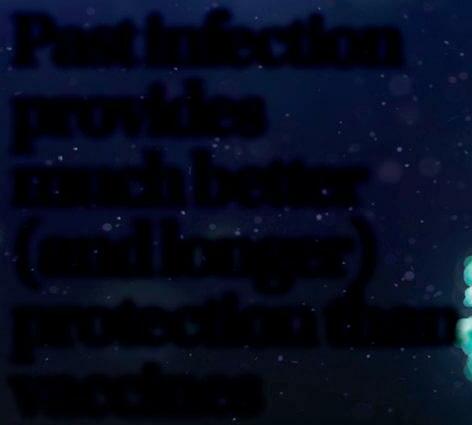
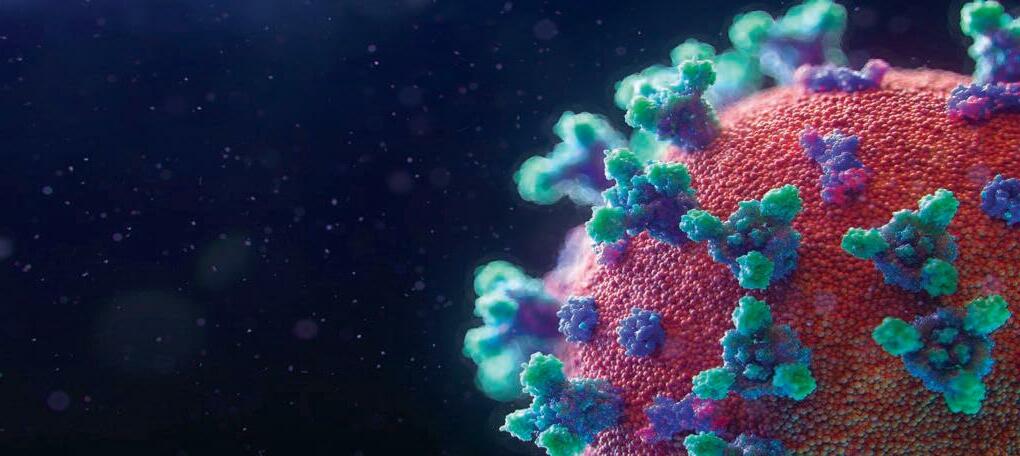

IT IS now a given that many children who have been vaccinated nonetheless experienced breakthrough infections during the Omicron surge, though protection against hospitalisation remained stronger, a large new study has found. e study compared the vaccination status of children ages 5 to 17 who were treated for Covid-19 symptoms in emergency departments, urgent care centres and hospitals across 10 US states between April 2021 and February 2022. Researchers reviewed records on nearly 40,000 clinic visits and 1,700 hospitalisations. e study was funded by the US Centres for Disease Control (CDC) and published in its Morbidity And Mortality Weekly report. e CDC study found vaccinated children ages ve to 11 -- the youngest and most recently vaccinated group -- were about 46% less likely to have Covid-19 that resulted in care at an urgent care clinic or emergency room, compared with children who were unvaccinated.
However, the new study found vaccinated primary school pupils continued to be less likely to be hospitalised for their infections than children who were unvaccinated. Out of nearly 1,700 hospital admissions, there were 59 unvaccinated kids ages ve to 11 admitted to the hospital after testing positive for Covid-19, and just two who were vaccinated. e study didn’t have enough cases to accurately estimate vaccine e ectiveness against hospitalisation in this age group. e new study comes just a day after new data from the New York State Department of Health also found vaccine protection against Covid-19 dropped substantially for children during the Omicron wave.
Please note that in the US the P zer vaccine is the only vaccine authorised for people younger than 18.
Dr Nicola Klein, an author of the study, thinks the drop in vaccine e ectiveness in the younger age group wasn’t because the dose was too low or there was a big di erence in response to the vaccines by age; she says this is just the rapid evolution of the virus.
“It is a little bit disheartening, but I think we also have to keep in mind that one of the complexities here is that because children started being vaccinated late last year, that coincides with when the Omicron variant began circulating,” says Klein, who is director of the Kaiser Permanente Vaccine Study Centre.
Adolescents ages 12 through 17 -- who get a dose of the P zer vaccine that’s three times higher than the shots for younger kids -- had better protection against most circulating variants, the new study found, but that protection dropped o steeply with time and the arrival of the Omicron variant.
Five months or more after a second dose, kids in this age group had no signi cant protection against Omicron infections warranting a trip to the urgent care or ER. About a week after a booster shot, however, most of their protection appeared to be restored.
Boosted teens ages 16 to 18, were about 81% less likely to need to see a doctor for Covid-19.
Over the entire 11 months of the study, fully vaccinated adolescents -- those ages 12 through 15 -- were 83% less likely to be seen for Covid-19 at the emergency room or urgent care clinic and 92% less likely to be hospitalised until about ve months after their second dose. After ve months, vaccine protection dropped to just 38% for ER or clinic visits and 73% for hospitalisations in this age group.
Older teens, ages 16 through 17, were 76% less likely to be seen for Covid-19 in an ER or urgent care if the rst ve months after their second dose and 94% less likely to be hospitalised. After 5 months, their protection dropped to 46% for clinic visits and 88% for hospitalisations. e researchers note that the study is strong realworld data on how well the vaccines are protecting children. ey say children should stay up to date on their Covid-19 vaccines, including boosters for all children who are eligible.


A NEW study, completed by Maccabi Health Services in Israel looks at the data presented by 2.5 million people from the beginning of vaccine rollout there and suggests that past coronavirus infection provides much better (and longer) protection than doe any of the vaccines.
And even though the results of this study have been known for some months now, health researcher Dr. John Campbell says many leading countries around the world appear to be ignoring it.
Results SARS-CoV-2-naïve vaccinees had a 13.06-fold (95% CI, 8.08 to 21.11) increased risk for breakthrough infection with the Delta variant compared to those previously infected, when the rst event (infection or vaccination) occurred during January and February of 2021. e increased risk was signi cant (P<0.001) for symptomatic disease as well. immunity confers longer lasting and stronger protection against infection, symptomatic disease and hospitalisation caused by the Delta variant of SARS-CoV-2, compared to the BNT162b2 two-dose vaccineinduced immunity. Individuals who were both previously infected with SARS-CoV-2 and given a single dose of the vaccine gained additional protection against the Delta variant.
In his typical understating style, Dr John Campbell says these results don’t seem to be getting through to leading authorities “who are still following what I would consider to be a rather old-fashioned strategy”.
In conclusion, he says the study demonstrates that natural immunity confers longer lasting and stronger protection, against infection, symptomatic disease and hospitalisation caused by the Delta variant.





What we now know about children and that jab
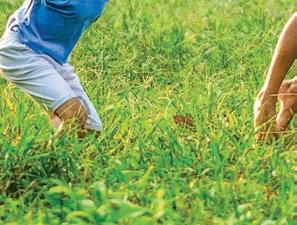
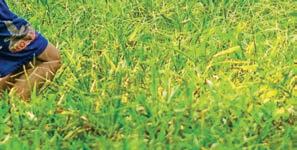
‘In US, Pfizer only vaccine for people under 18...

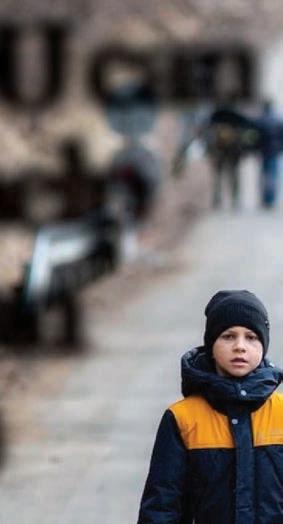
How YOU can people help Ukrainian refugees
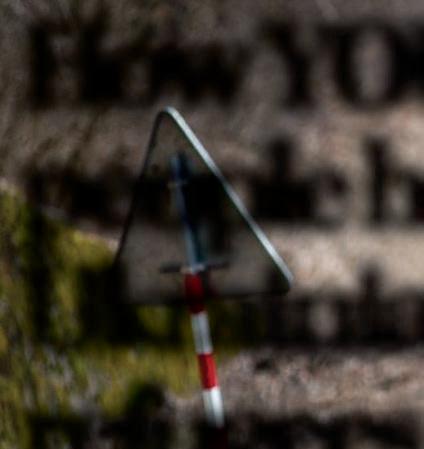
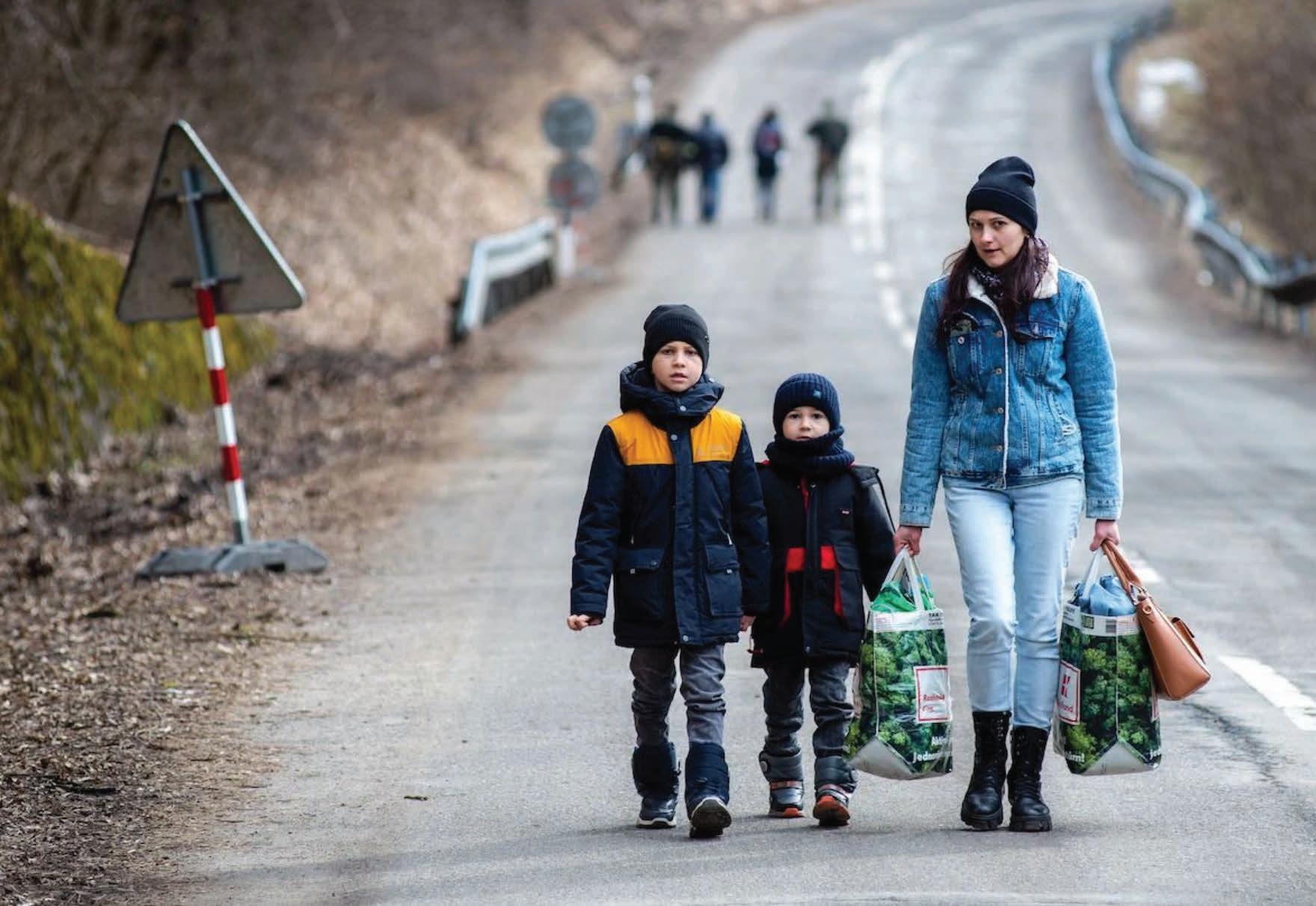
WITH the Government having announced the setting up of a pledge register Kilkenny people who wish to can give support to Ukrainian refugees. At least two million people have ed Ukraine, as of time of going to press, with Tanaiste Leo Varadkar predicting up to 100,000 refugees may eventually arrive on Irish soil. e online pledge register portal, run in conjunction with the Red Cross, will include o ers of accommodation.
Where do I register to accommodate Ukrain refugees?
Go on to the Irish Red Cross website on IrishRedCross. ie and look for the register of pledges. e direct link to the register is https:// registerofpledges.redcross.ie
What happens after I register?
Operators working on behalf of Red Cross will contact you in the coming weeks asking for further details, to get a sense of what is on offer, and they will explain some of the scenarios that may arise.
What kind of detail will they be looking for?
They will be looking for information about the property. Is it shared? Is there a spare bedroom? Is there an en suite? Is it a ‘stand alone’ house. Where is the house? Is there access to public transport? Is there a family living in the house?
Will someone want to see the property?
Prospective accommodation will be vetted in the main by the Red Cross. Someone will call to make sure it is what you have described.
Do Ukrainian people have any say regarding where they live?
The Irish Red Cross is also setting up a website for the Ukrainian people to register their interest. The accommodation pledger is then matched with the refugee.
How long should I expect to host refugees?
A commitment of six months to a year will be sought. However, in the current environment the Red Cross says many Ukrainians want to come for a shorter period and then go back home. While the Irish Red Cross says it will talk to people about a shorter period, the initial pledge is for six months to one year.
Who covers the cost?
Most people pledge free gratis. However, there are times where the Red Cross “steps in” if households need to be supported. In this situation, it says that will be shared between the Government and the Irish Red Cross.
Can I contact the Red Cross after I have taken in people?
The Irish Red Cross says it is there to offer guidance and support. They want refugees to settle as best they can and to support the pledger. It says previous initiatives have shown “extraordinary relationships” developed with Irish families.
What does the term standalone pledge mean?
A stand-alone pledge is where you pledge a house, or you pledge an apartment. A refugee family will typically live there by themselves.
What is the meaning of a shared pledge?
A shared pledge is where there is one room available, preferably with an en suite room and you are offering it for a period. In this case, you are inviting people to your home.
Has a register of pledges ever been created before?
There was a register of pledges when Syrians came to Ireland, but it took a long time for the Red Cross to contact people on the ground which frustrated those that were interested in helping. The Red Cross says it has learned lessons from the past and this will enable the current register to work.
Wexford man’s emotional 5,000km journey
A JOURNEY of 5,000km by a Wexford man to bring a Ukrainian family to their grandmother in Ireland was “the most emotional reunion you could ever imagine”, he has told media outlets.
Trevor Geraghty’s conscience found him driving from his home in Scotland to the Medyka crossing on the Poland-Ukraine border with medical supplies last week, where he met a Ukrainian family torn apart by war.
“I was holding up a sign that said, ‘Travelling to Scotland if anyone needs a lift’ and the next thing a phone appeared in my face with a woman on the other end in Scotland asking me, ‘Will you take care of my grandchildren?’,” Mr Geraghty said.
“I told her that I would of course and we loaded them in the car and sped out of hell. If they had been going to Finland, I’d have taken them, such was the situation, to be honest,” he told the Irish Independent.
Elizabeta Shyshorina along with her sons Oleksandr (15), Kyrylo (13) and daughter Polina (8) ed Zaporizhzhia with nothing when shelling intensi ed. ey travelled 1,200km by any means possible and days later ended up in Medyka. ey had nobody or nothing in the world that wasn’t back in their hometown except for Galina, Elizabeta’s grandmother, who lives in Scotland.
“ eir father stayed behind to ght, as pretty much all the men are. ey have relatives ghting in the forest near the nuclear plant and they have no idea if they are dead or alive.
“ ey are in total shock and very worried for their relatives stuck at home,” the Gorey man said. e family spent another ve days travelling across Europe.
However, they were forced to make a detour to Ireland when the UK would not permit them immediate access, despite their grandmother being a permanent British resident with a British passport.
“ e Garuda in Rosslare was angry when we got there. He was amazing with the family, but angry at the situation as he said we were not the rst people having to divert here because of the UK’s policy on refugees from Ukraine.
Galina ew from Scotland to Ireland and the family were reunited in Arklow, Co Wicklow, where they stayed in a hotel.
Meat workers home to fight
Meat factories in Ireland are being urged to support their Ukrainian workers as many decide to return home to defend their country against the Russian invasion or bring their families to Ireland.
A number of workers in Staunton’s pig factory in Cork have decided to return to Ukraine and management in the factory is supporting them in any way it can. Other workers have said they will stay to earn money to send home to their families and volunteers ghting in Ukraine.
At least 100 Ukrainians are working in meat factories across the country and the impact of their departure could potentially have an e ect on a factory’s kill line.
Clune welcomes debate on our neutrality
South East MEP Clare Clune has welcome the Taoiseach’s suggestion that a Citizens’ Assembly could be established to discuss the topic of Ireland’s neutrality.
Since its establishment in 2016, the Irish Citizens’ Assembly has deliberated on a number of key issues, including providing a launch pad for the Eighth Amendment referendum.
Cryptocurrencies prices to rise?
Russia’s invasion of Ukraine has put bitcoin and other cryptocurrencies centerstage as people look for ways to donate funds. ere was a time when cryptocurrency was often associated with the dark side of human nature. at’s because untrackable currency works really well for people up to no good or anyone who doesn’t want a lot of attention. It’s a lot easier to move crypto around than it is to use gold bars or diamonds to pay for your murder for hire or complete your drug deal.
Russian debt default ‘will affect China’
A Russian debt default could spill over into emerging markets including China, according to Yale economist Stephen Roach
Famed economist Stephen Roach told CNBC that a Russian debt default would reverberate across emerging markets.
He also said China would not be immune if Russia’s rst major sovereign default in over 100 years happened.








